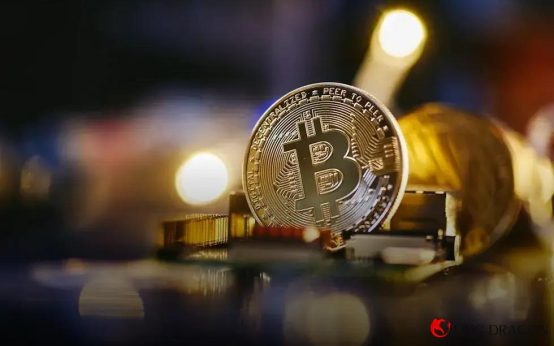How Shrinkflation Is Changing Consumer Shopping Habits is a topic worth exploring as it significantly impacts purchasing decisions. Shrinkflation, the practice where product size or quantity is reduced while prices remain the same, is becoming more common in today’s market. As consumers notice this trend, their shopping habits are adapting rapidly. In this blog, we will delve into what shrinkflation means, its effects on consumer behaviors, strategies to cope with it, and potential future trends.
The Concept of Shrinkflation: An Overview
Shrinkflation refers to the phenomenon where the size or quantity of a product is reduced while the price remains the same. This concept is especially noticeable in the consumer goods industry, where manufacturers opt to give less product in the same packaging to maintain profit margins without increasing the shelf price.
The practice of shrinkflation is not new, but it has become more prevalent as businesses face rising production costs. Companies often prioritize minimal changes to ensure consumers continue to purchase their goods.
Manufacturers’ Strategy: By subtly decreasing product size, companies avoid customer backlash that might occur with direct price hikes. For businesses, the challenge is to make these reductions as unnoticeable as possible.
Shrinkflation affects numerous industries, from snacks and beverages to cleaning supplies and personal hygiene products, altering the purchasing decisions made by well-informed consumers. Understanding the nuances of shrinkflation helps shoppers become more mindful of their expenditures and the true value of their purchases.
Impact on Consumer Shopping Patterns

Shrinkflation significantly impacts how consumers shop by altering their perceptions of value and influencing purchasing habits.
Product Awareness
As consumers become more aware of shrinkflation, they tend to scrutinize products more closely, paying attention to unit prices and package sizes rather than just the brand or product features.
Brand Loyalty
This phenomenon can erode brand loyalty as shoppers feel deceived and begin seeking alternatives that offer perceived better value for money.
Shift to Bulk Buying
Consumers adjust by buying in bulk when they perceive a price hike is possible, as larger products often offer better value per unit.
Preference for Store Brands
As national brands reduce package sizes, many shoppers explore store or generic brands, which are often perceived as offering the same quality but at a lower price.
Budget-Friendly Alternatives
Consumers increasingly look for budget-friendly alternatives and are more likely to experiment with discount brands or products during promotions.
Impact on Shopping Frequency
Shoppers may also adjust the frequency of their shopping trips, opting to stock up on essential goods when favorable prices are available, to mitigate the effects of shrinkflation.
Strategies for Shoppers to Combat Shrinkflation
Understand Product Changes: It’s crucial to be aware of the subtle changes in product packaging and content.
- Check unit prices instead of overall price to see if you are paying more for less.
- Look for products that offer special deals or larger sizes for better value.
Be Flexible with Brands: Consider switching to different or store brands that might offer more product for a lower price.
Buy in Bulk: Purchasing in bulk can sometimes be a more economical choice, especially for non-perishable items.
- Join wholesale clubs or look for bulk buying options online.
- Compare the per-unit price to ensure you’re getting a good deal.
Utilize Coupons and Discounts: Make the most of coupons and discounts to offset shrinkflation impacts.
Online Tools and Apps
Leverage various tools and apps available for tracking prices and finding the best deals. Stay informed about which products are affected by shrinkflation and where you can find less impacted alternatives.
Be Vocal About Changes: Share your experiences and concerns about shrinkflation with brands through social media or customer feedback channels. This can especially influence brands that value consumer feedback. Plan Your Purchases: Creating a shopping list and sticking to it can help avoid impulse buys, which may be more heavily subjected to shrinkflation.
Stay Informed: Keeping abreast of economic news and trends can prepare you for product changes and help you adjust your shopping habits accordingly.
Future Predictions: Shrinkflation and Market Trends

The phenomenon of shrinkflation is expected to intensify in the coming years as companies continue to look for ways to maintain their profit margins in a competitive market. With rising production costs and price sensitivity among consumers, brands may increasingly opt for reducing product sizes instead of hiking prices outright. This tactic allows businesses to mitigate consumer backlash while still adapting to economic pressures.
Experts predict that shrinkflation will become more prevalent across various industries, not limited to just food and beverages. As brands keep tweaking packaging sizes, there’s a potential shift in market trends where shoppers might become more conscientious about the actual value they’re receiving with each purchase. Keeping a vigilant eye on changes in product packaging and size becomes crucial for consumers aiming to obtain better value.
Moreover, as awareness around shrinkflation rises, consumers are likely to engage in adaptive shopping behaviors. Shoppers may pivot towards purchasing bulk items or consider opting for different brands that maintain consistent product sizing. This behavioral change could shake market dynamics, as trust becomes a significant factor in brand selection. Online platforms and consumer forums are expected to play a significant role in shaping consumer opinions, leading to a more informed marketplace. Brands that maintain transparency about their pricing and product size adjustments are more likely to retain consumer loyalty in the long run.
Finally, as digitization and e-commerce evolve, these trends might adapt further. Smart technology applications can provide consumers with real-time updates on product size changes, offering a transparent shopping experience. Therefore, the growing influence of technology will contribute significantly to mitigating the opaque effects of shrinkflation on consumers, fostering a future where informed decisions are the norm.





